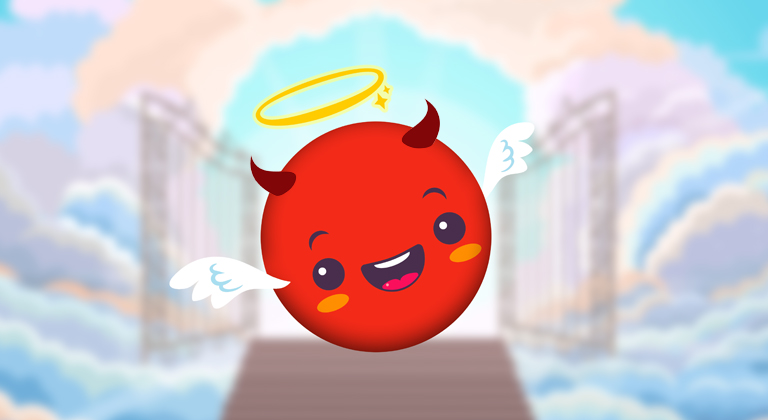Lee Child on the Flexibility of Point-of-View
One of the first decisions you have to make before starting to write a novel is which perspective, or point-of-view (POV), will be most effective in telling your story. The most common ones are first person and third person, and while I think most authors prefer one perspective over another, there are occasions where you at least want to consider the alternative. Most readers have a preference as well, and traditionally authors tend to respect this when writing series by keeping the whole series in the same perspective. But that doesn’t mean switching it up can’t be done.
Lee Child is one example of an author that not only switches POV between books in his Jack Reacher series, but has even gone as far as to switch from first to third person within the same book! This week, Ginger delves into POVs to try and explain not only which one works for what type of story, but also the idea of switching back and forth within a book and how author’s like Lee Child can make that work.
A few weeks ago I wrote a blog about: “What Lee Child can teach us about writing.” That inspired one reader to ask me a question about one of the most hotly-debated questions regarding Child’s writing style: Why are some of his books written in first-person perspective, and why are some of them written in third-person perspective?
It’s a question I’d pondered myself a few times. The first Lee Child book I ever read was One Shot, and that could literally be the blueprint for how to write an effective thriller in third-person-perspective. As Jack Reacher tries to clear the name of a suspect in a mass shooting, we follow not just our hero – but also other characters involved in the story, and even the bad guys. It’s all written incredibly clearly, with editing as sharp as Reacher’s shooting skills.
Yet ten books later in the series, in Personal, the entire book is told from first-person perspective – and this isn’t the only Jack Reacher book to be written this way. In fact, Lee Child himself has admitted:
“I’m very comfortable writing in the first person. It feels more natural to me, and it’s the intuitive way to tell a character-based story.” – Lee Child
But why would Lee Child bounce back and fourth between the two? It’s such a fundamental shift in writing style and one that has had many authors questioning themselves. For example, I wrote two books in one of my series in third-person perspective, but I really wanted to shift to first-person for the third and subsequent installments – yet I hesitated because I thought it would be too jarring for return readers.
Yet Lee Child doesn’t seem to have any compunction about doing this – and it’s not just chopping and changing the POV in one book compared to another. Sometimes it happens in the same story!
Considering the guy has sold over 100 million copies of his Jack Reacher thrillers, perhaps it’s worth investigating why Lee Child feels confident about playing so fast and loose with something as fundamental as point-of-view – and what we might learn from it.
Point-of-view is about knowledge
Fortunately for us, an author called Michael Caughill James asked Lee Child this exact question on Goodreads , demanding: Some of the books are in first person. Some in third. Which do you prefer and why?
Lee Child responded:
“Sometimes the story requires the reader to know something that Reacher hasn’t yet discovered. If that’s the case, I’ll use third person. Third person allows the reader to essentially see around corners.”
This is a solid answer, and it’s one that explains why a lot of writers end up committing to third-person perspective for their books. George R. R. Martin is a great example of this – writing chapters from the perspectives of many different characters to advance his epic stories, and maintaining a third-person viewpoint throughout.
But to mix-and-match it – sometimes in the same book – is a very bold move that few authors would be comfortable with. Why does Child think that doing this is okay? And, more so, how have so many readers accepted it without question?
Well, I think the answer to that question comes from one of the defining strengths in Child’s storytelling – simplicity.
Although he writes complex books, Lee Child’s writing style is deceptively simple. With each line he tries to communicate the information the reader needs in as brief and effective a way possible – hence the opening line of One Shot being “Friday” – which is the most effective and efficient way possible to communicate to a reader what day of the week it is.
When it comes to storytelling, using the first-person-perspective is almost like a cheat code. It instantly makes characters and situations more relatable to readers (because you basically inhabit the main character) and it’s a good way of keeping things coherent because this POV forces a writer to only divulge information the individual character is cognizant of. There’s no ‘God mode drift’ which is how I refer to writers who struggle with the third person.
It’s also highly effective for a character like Jack Reacher, who is as concise in his thoughts as he is with his words. It’s a style of storytelling very well-suited to Lee Child’s strengths as a writer.
Yet sometimes you do need the reader to be aware of people, things, and events that the main character isn’t – especially when it comes to building dramatic tension. In fact, that’s one of the elements Alfred Hitchcock once described as being essential for suspense.
“Mystery is when the spectator knows less than the characters in the movie. Suspense is when the spectator knows more than the characters in the movie.” – Alfred Hitchcock
In One Shot, for example, there are a couple of murders that the bad guys try to pin on Reacher and it would be impossible to explain the consequences of them without describing what happened. The simplest solution to this – and remember, Child is all about simplicity – is to write in third person.
Yet Child also helps the readers maintain the narrative flow by keeping the sections focusing on Reacher similarly written in third-person – it’s consistent throughout.
Which is ultimately what I think is the best way to approach this dilemma – even though Lee Child has demonstrated on multiple occasions that he can balance first and third-person perspectives even within the same book.
Go With The Flow
Readers are pretty adaptable, and it doesn’t take long for them to get into the rhythm of reading a book whether it’s written in first person or third person perspective. However, there’s still a transition – and from personal experience of Lee Child’s books, I’ll admit it can be quite jarring to go from being right inside Jack Reacher’s head to suddenly floating above a completely different character’s head in omnipresent third person – especially when that viewpoint changes chapter-by-chapter.
That’s why I feel there’s still value in having personal discipline about which perspective your whole book will be written from, and committing to stick only to that style. That’s not to mean it can’t be done – Lee Child is proof of that – but I don’t necessarily think that it’s the best approach.
I say that because I’ve read a number of books in which the change of viewpoint was very jarring and detracted from my overall enjoyment of the story. One novel in particular had the “main character” die in the climax of the second act, which meant the final third of the book was written in third-person perspective of a character I hadn’t been that invested in. It was something I truly felt was a mistake – and the problem of defending it with the justification that “Lee Child does it” won’t work unless you’re a writer of Child’s caliber (which very few of us are!)
Yet if doing so is the simplest way to effectively tell a story, it shouldn’t be discounted as an option. After all, the wonderful thing about writing is that it’s inherently flexible enough to experiment with endlessly, so what I say you “shouldn’t do” might be the perfect style for another author. I mean, it certainly works for Lee Child – but you clearly have to be a good author to get away with it.
I’d say this is where plotting your books becomes most valuable, because peeling away the layers of the plot often helps you understand which perspectives you’ll need to tell the story from. Sometimes simplicity of writing requires quite complex process of thought. An entire book can change when you alter the storytelling perspective; and so can how effective it is at engaging with readers.
Do you agree? What are your thoughts on switching up storytelling perspectives? Especially in the same story! I’d love to hear your opinions – let us know in the comments section below.












Good article–thanks, Ginger.
In contemporary writing, 3rd person doesn’t have to be the all-knowing narrator. You can write in 3rd person and still be fully inside the character’s head throughout. If the ‘he’ or ‘his’ can be switched to ‘I’ and ‘mine’ and still bear the same meaning, and you only know what the character knows – then this is the contemporary way to write 3rd person. No external narrator. In romance, usually it’d be dual pov (interchanging chapters) where each has their own voice/style (e.g. blunter wording for one character vs gentler for another). No head hopping from one to the other in the same chapter or to different characters and no info is divulged that the character isn’t aware of.